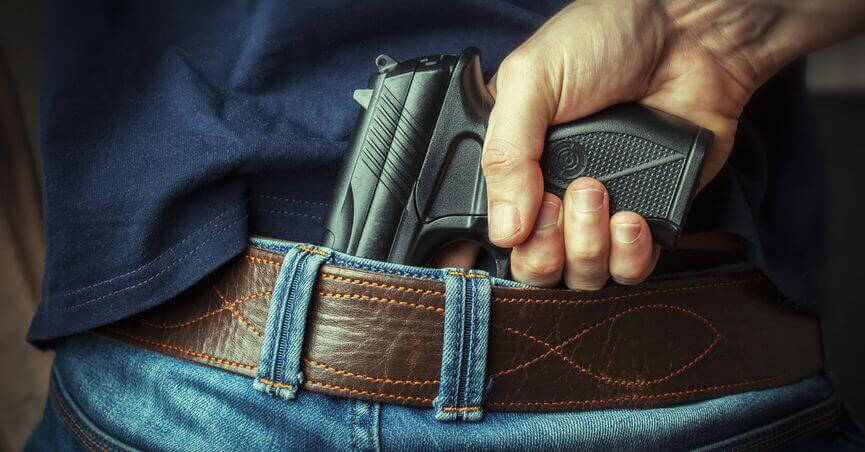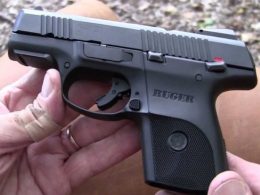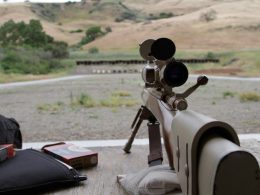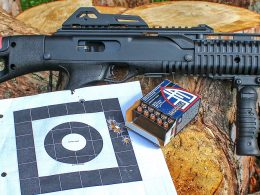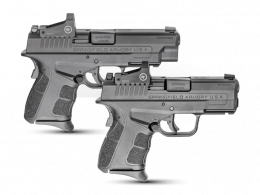If you’ve never held a gun in your life, chances are you can still point to a picture of a 1911 and know that it is a 1911 pistol.
That is how you know a gun is a real piece of history. From before WWI until the mid-1980s, the M1911 and M1911A1 served American G.I.’s from the trenches of France to the jungles of Vietnam.
While it’s lost favor in a modern era of polymer and high capacity, the 1911 in all its forms is still a formidable weapon and a great shooter.
We’ve tested a lot of 1911s and now we have what we feel are the best bang for your buck! Take a look for the full rundown of features, options, and some history!
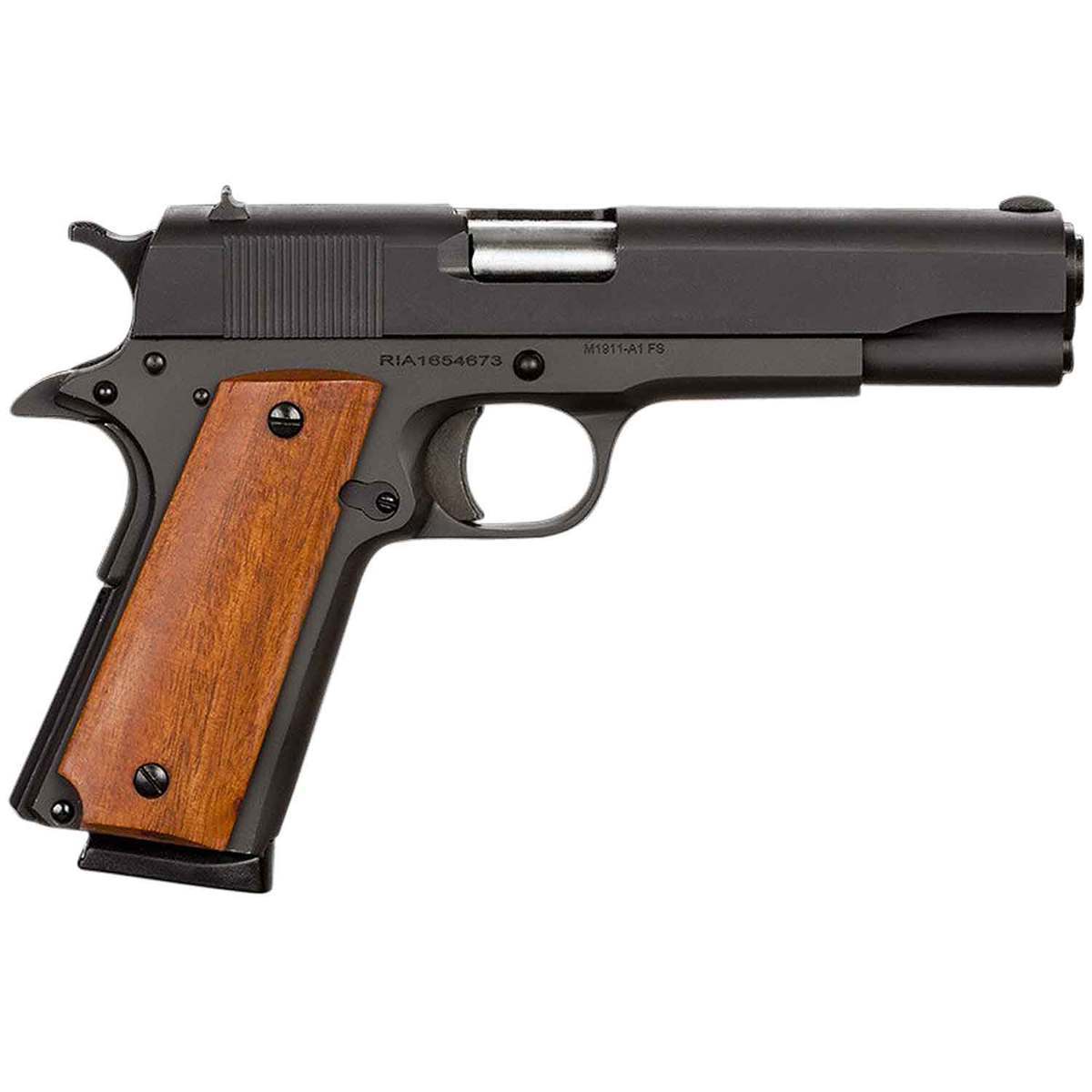
|
Rock Island Armry Rock Standard Full Size |
|
$430
 Shop NowClick to read my review
Shop NowClick to read my review |
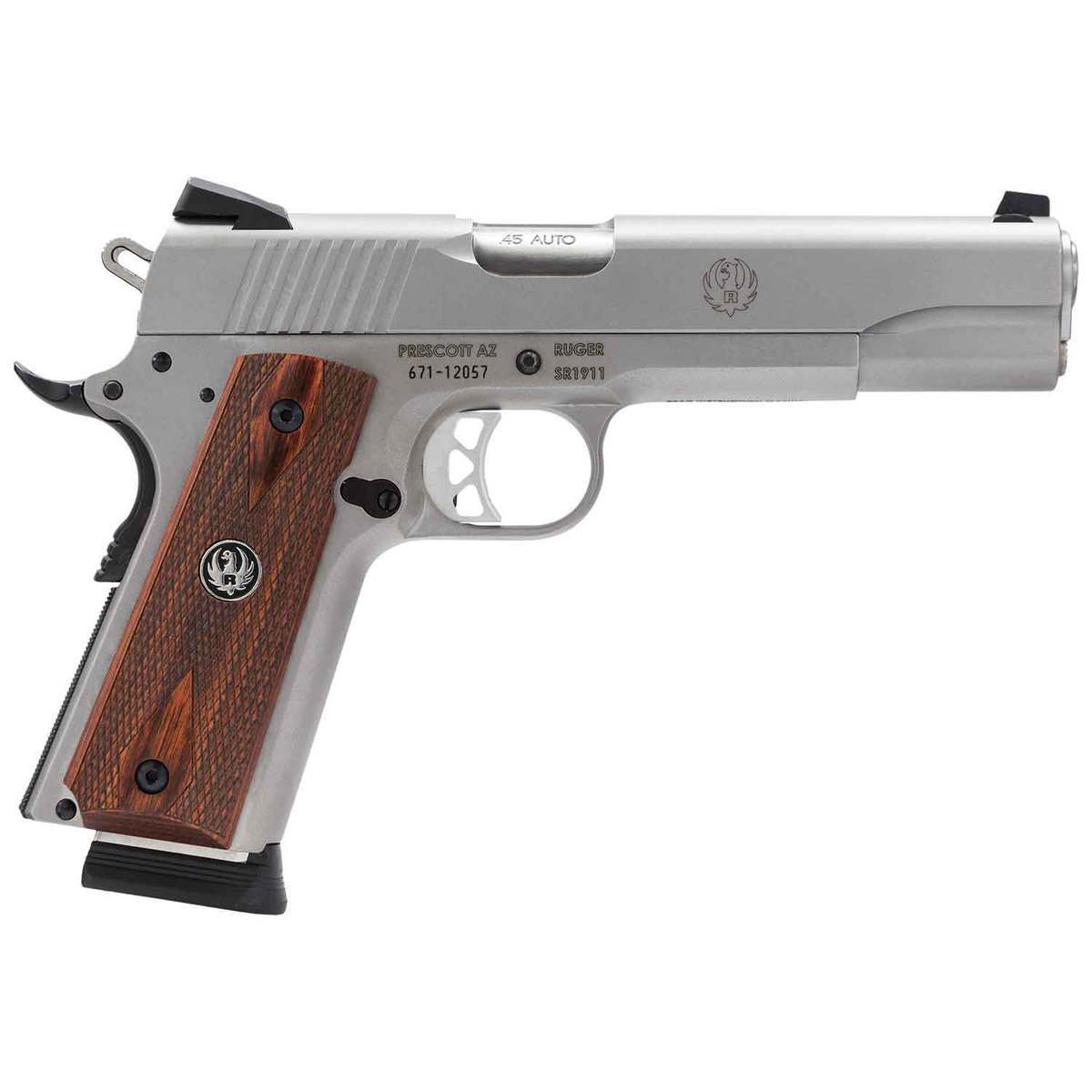
|
Ruger SR1011 Stainless Steel |
|
$930
 Shop NowClick to read my review
Shop NowClick to read my review |

|
Taurus PT-1911 |
|
$640
 Shop NowClick to read my review
Shop NowClick to read my review |
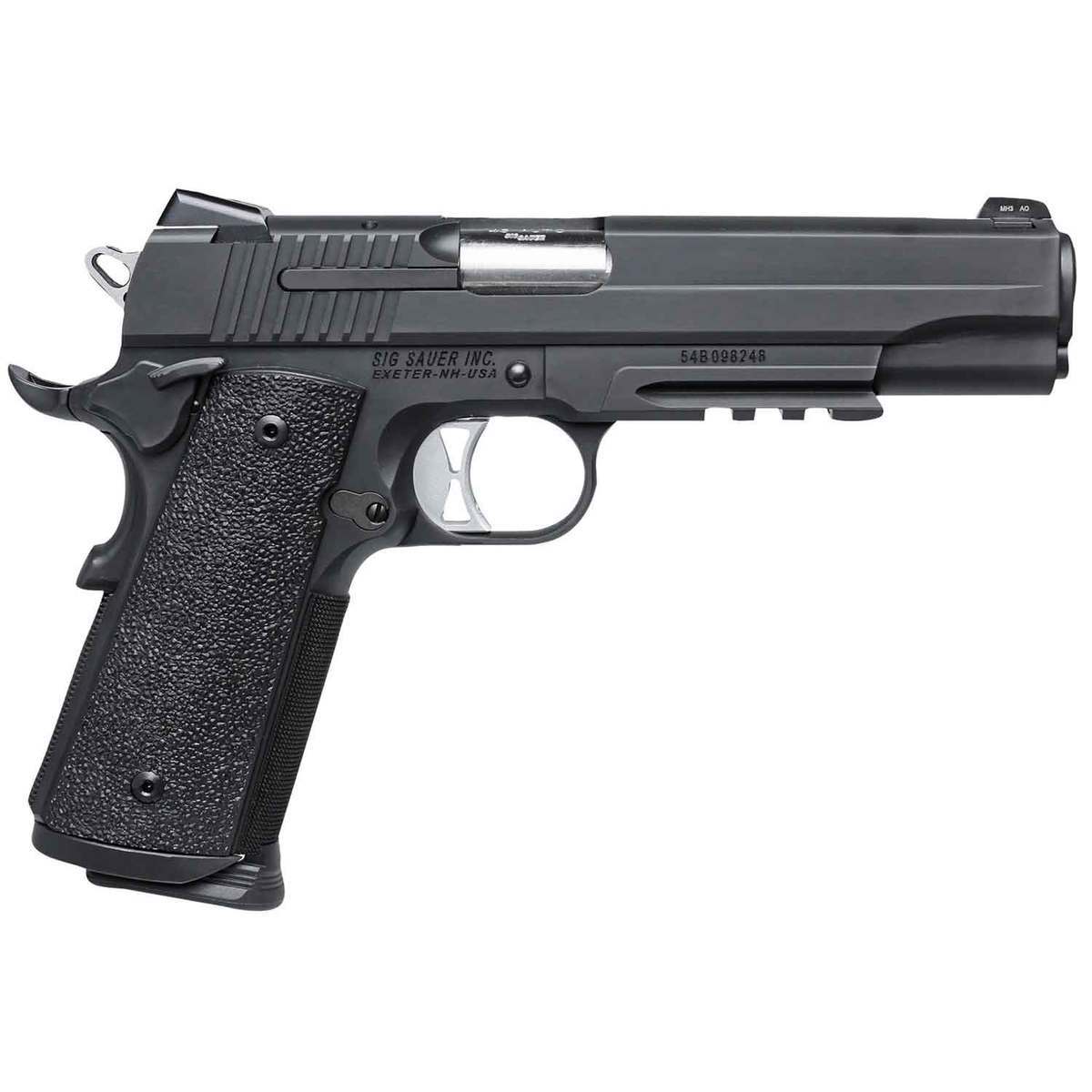
|
Sig Sauer 1911 TACOPS |
|
$900
 Shop NowClick to read my review
Shop NowClick to read my review |
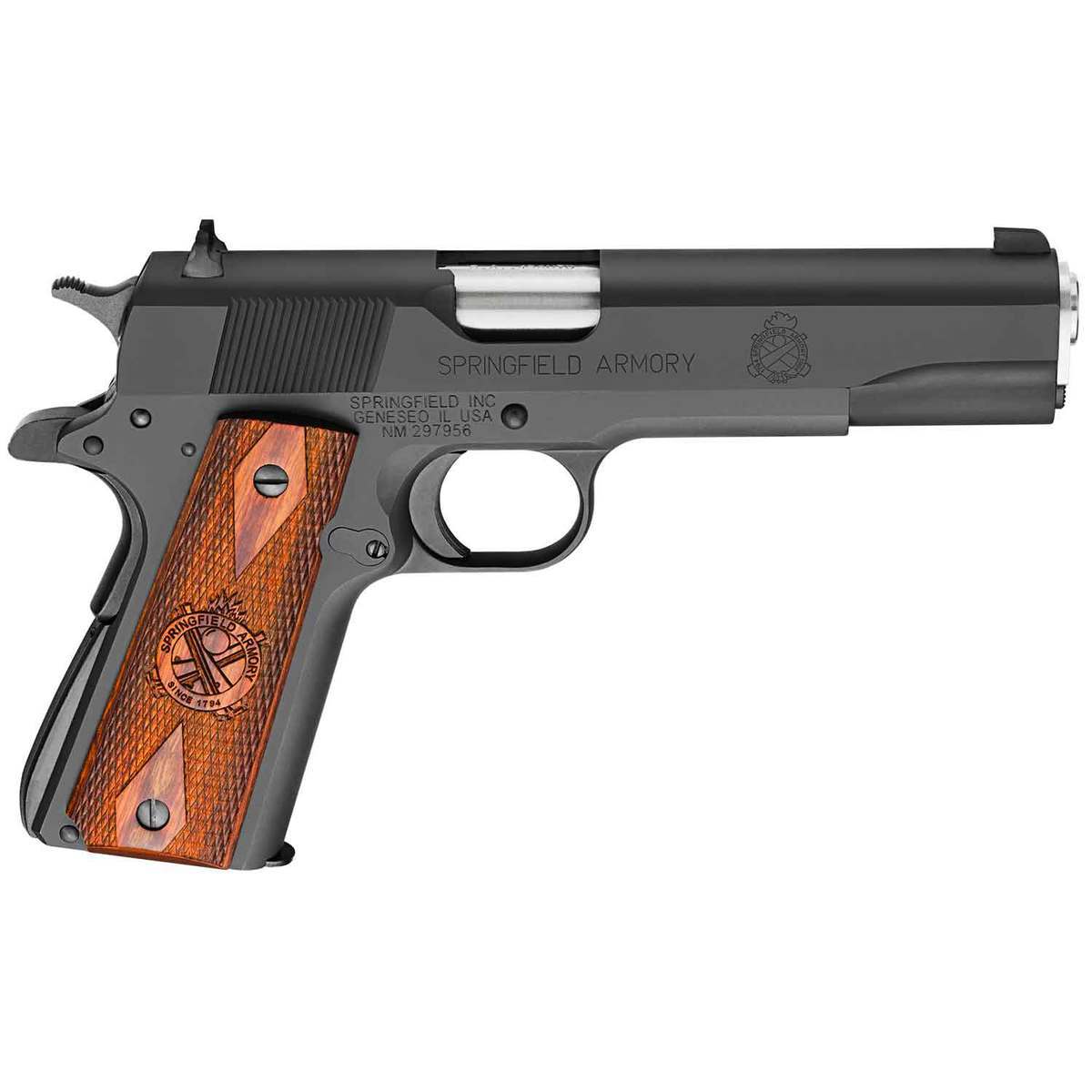
|
Springfield Armory 1911 Mil-Spec |
|
$700
 Shop NowClick to read my review
Shop NowClick to read my review |
History of the 1911
The Colt 1911 was the brainchild of the legendary gun designer John Moses Browning.
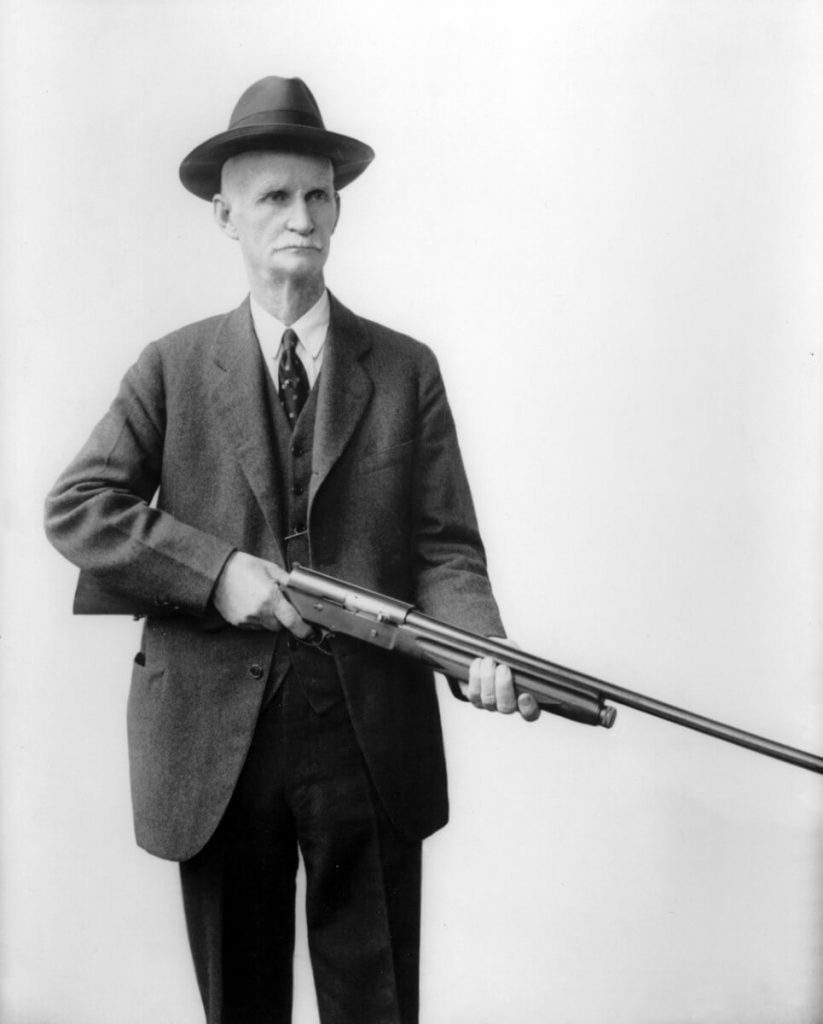
Collaborating with Colt, he set about to make a sidearm to satisfy military requirements for the procurement of a self-loading .45 caliber pistol.
The Ordnance Board was dissatisfied with the issue revolver cartridge of the time, the .38 Long Colt, which had proven to be ineffective in the Philippine-American war against Moro tribesmen.
BONUS OFFER: Get your free shooting range targets to print at home!
Get your free targets to print at home!
They wore “body armor†of tightly-wound grass around their torsos and were drug-influenced to not feel pain. The anemic .38 could not stop them.
After temporarily re-issuing the tried and true .45 Colt Peacemaker, the Ordnance Board was looking for a better gun, a more permanent solution.
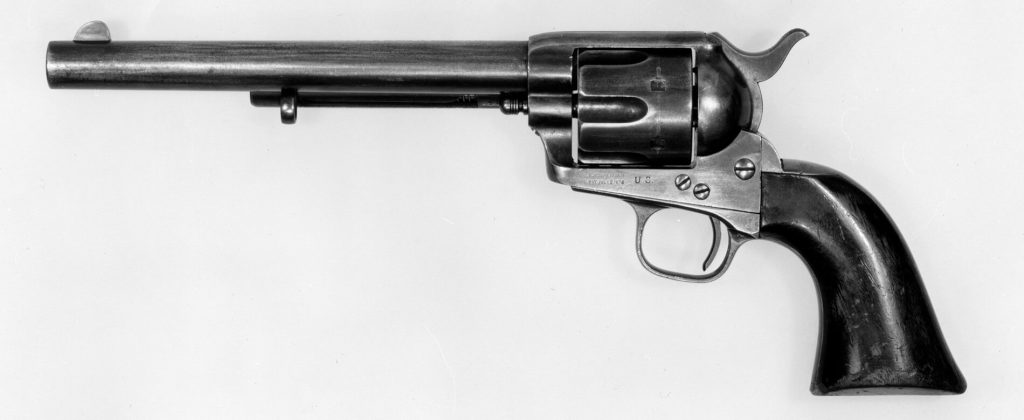
Keep in mind, all of this was long before modern expanding bullets had been designed and ball ammo requires a lot more size and mass to be effective on soft targets.
Selecting A New Sidearm
So, in 1904, Lieutenant Colonel John Thompson (years later he would design the “Tommy Gunâ€) and Medical Corps Major Louis LeGarde conducted tests to find a cartridge that would prove to be an effective stopped.
They arrived at a bullet that “should not be of less than .45 caliber†as the best (at that time) man stopper.
A self-loading semiautomatic pistol was the preferred choice – not a revolver.
RFPs (Request for proposal) were issued to the arms industry for such a gun/cartridge combination.
Many outstanding manufacturers stepped up in hopes of landing this very lucrative contract including Savage, Colt, and even German DWM who offered a P08 Luger in .45 caliber.
And The Winner Is…
After re-submission of refined designs, only the Savage and the Colt were left in the ring.
However, a test in November 1910 still showed that the Savage and Colt models had issues. Colt’s shortcomings included barrel and frame cracking after a 6,000 round test — not acceptable.
In March of 1911 one final deciding test was had between the two pistols. The test consisted of both pistols firing 6,000 rounds over two days.
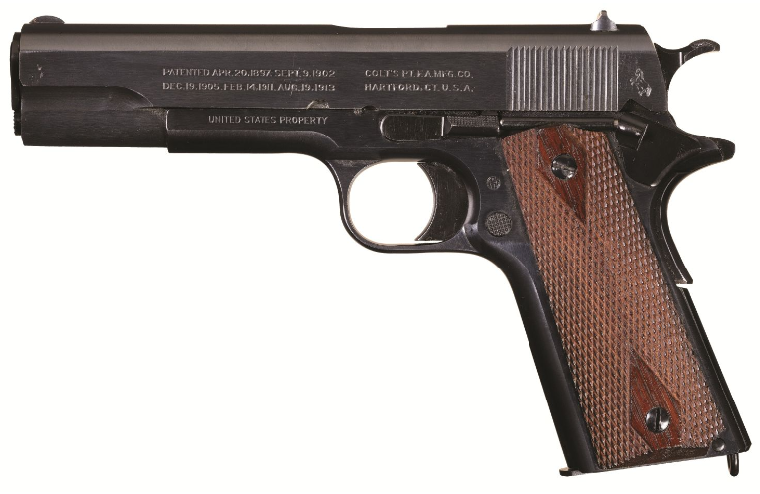
The Colt got so hot that they cooled it by dunking it in water several times and by the end had a perfect score — zero malfunctions!
Even by modern standards though, the Savage didn’t do too badly with 37 stoppages over 6,000 rounds.
The winner was the military-designated “Model of 1911†Colt pistol, formally adopted on March 29, 1911. Later shortened to M1911, it was (is) the basic pistol that we are familiar with today.
While some design changes would be made in 1926, the pistol would serve as the primary sidearm of the US Military until 1985.
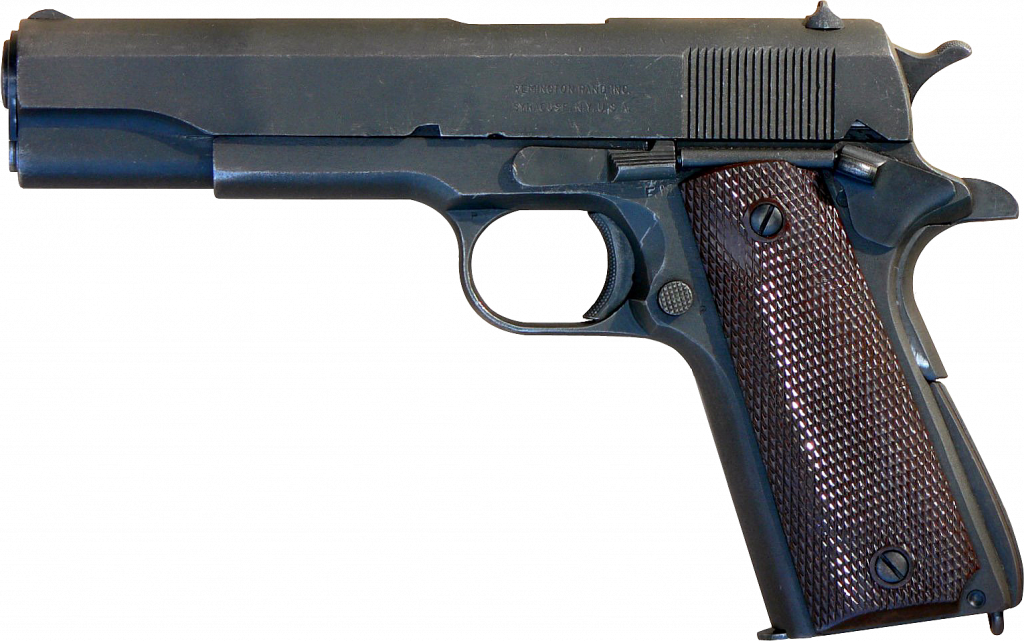
In 2012 the 1911 saw new service with the Marine Corps when the M45A1 was adopted for use with Marine Corps Special Operations Capable Forces (MEU(SOC)).
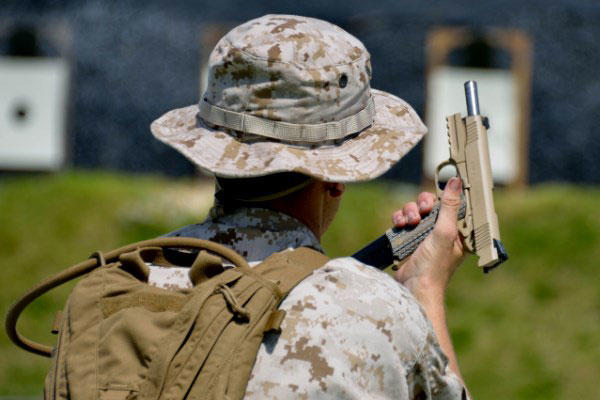
Time For A Change
Having stood the test of time, the pistol was an active issue to our military for 74 years.
But, when faced with a growing inventory of shot-out guns (coupled with pressure from NATO to adopt their 9mm cartridge), the old M1911 warhorse was phased out and replaced by the Beretta M9 in 1985.
The M9 served 32 years until it was replaced by two military versions of the Sig-Sauer P320: the M17 (full-size) and the M18 (compact) models.
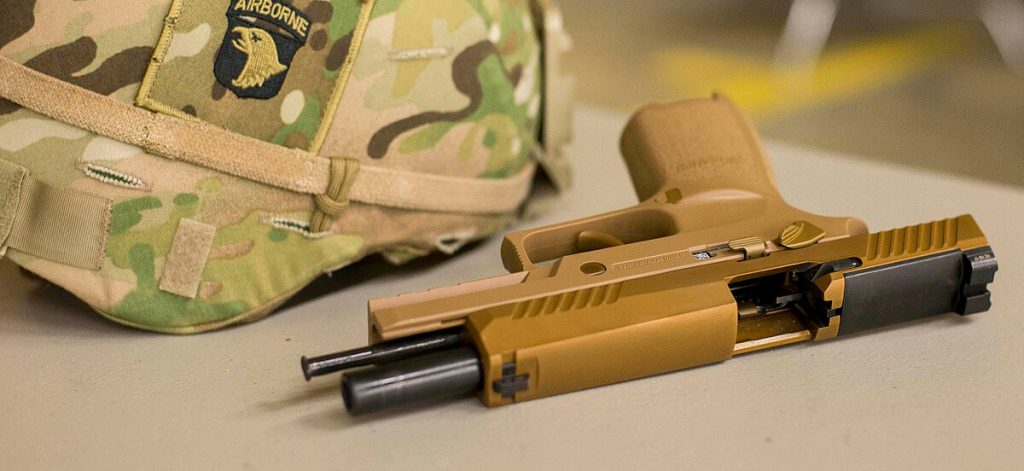
Ol’ Slabsides still holds the record for the longest active-duty service span for a sidearm in the U.S.
The M1911 was also used by 27 other countries.
Popular Articles
Defining “The Best 1911â€
“The best 1911 for the moneyâ€. That describes a lot of guns, to be sure! Let’s narrow it down.
First, we’ll talk about only .45 ACP caliber guns.
The 9mm is enjoying huge growth in 1911 sales (read also: Best 1911 chambered in 9mm) and many of the guns I’m writing about are available in that caliber.
Another caliber that is growing in the 1911 arena is the 10mm (10mm vs .45 ACP Comparison). But we’ll restrict our overview to .45 ACP guns.
If you want to learn more about different cartridges, I recommend reading my Handgun Caliber Guide.

How do we define the “best for the money?†My guidelines for that category are simple.
I will list guns that are well-built, reliable, and affordable by most shooters. Good customer service will be considered as well.
The list of high-end production- and custom-built 1911s is long. They are works of art, things of beauty, but some of them don’t offer any more reliability and accuracy than a lot of moderately-priced off-the-shelf guns.
It’s easy to spend $3,000 or more on a custom-built gun, but for most of our needs, the moderately-priced guns will suffice nicely.
Am I saying that I would turn down a Wilson Combat CQB with its base price of $2,895? Not hardly – I’d love to own one. But my gun world revolves around a lesser-expensive sun.
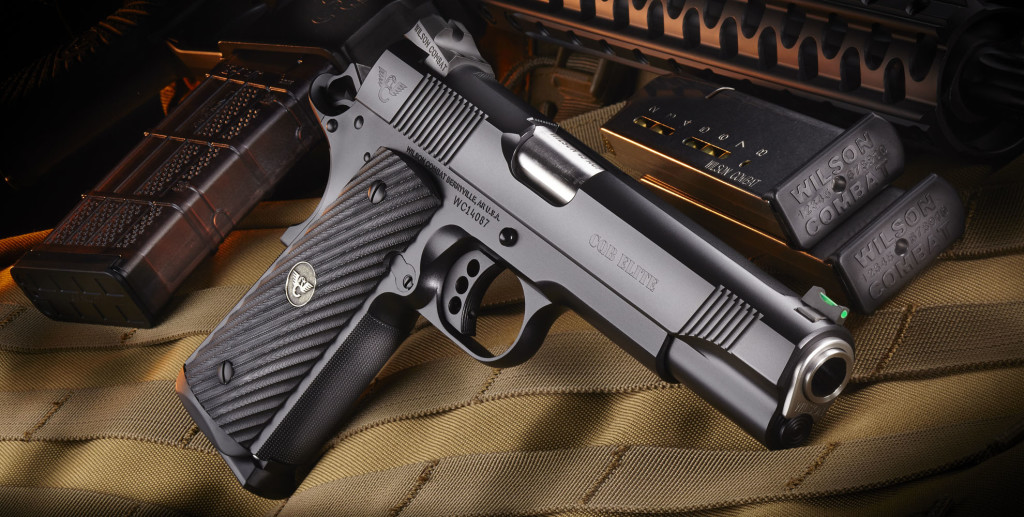
If you are on a strict budget, you might also be interested in my Best Budget 1911’s article.
Similarity Of Design Helps
One more thing before we start describing guns. The list of specifications I will include may not seem overly detailed.
Let’s face it… one standard-size 1911 will be pretty much the same size as another, with small exceptions.
If you can shoot one, you can pretty well shoot most others, given some leeway. Sure, there may be differences in trigger reach, trigger pull, sights, etc. but by and large one 1911 grip frame will feel about like another.
This standardization is what 1911 aficionados count on, what makes shooting one of these great guns feel as familiar as your bedroom slippers.
There’s something to be said for uniformity of design and manufacture. All of these guns are full-size, with five-inch barrels. Most all can be had in Commander (4.0 – 4.25 inch barrel) and Officer lengths (3.0 – 3.5 inch barrel).
Just to keep it easy, we will limit our discussion to full-sized models.
So let’s look at some guns…
BONUS OFFER: Get your free shooting range targets to print at home!
Get your free targets to print at home!
Best 1911 Pistols
1. Rock Island Armory Rock Standard Full Size 1911
My first choice for an affordable 1911 are those made by Rock Island Armory, or RIA as it is known.
RIA makes some of the very best pistols for the dollar — I know because I’ve owned two of them, a compact and a full-size.
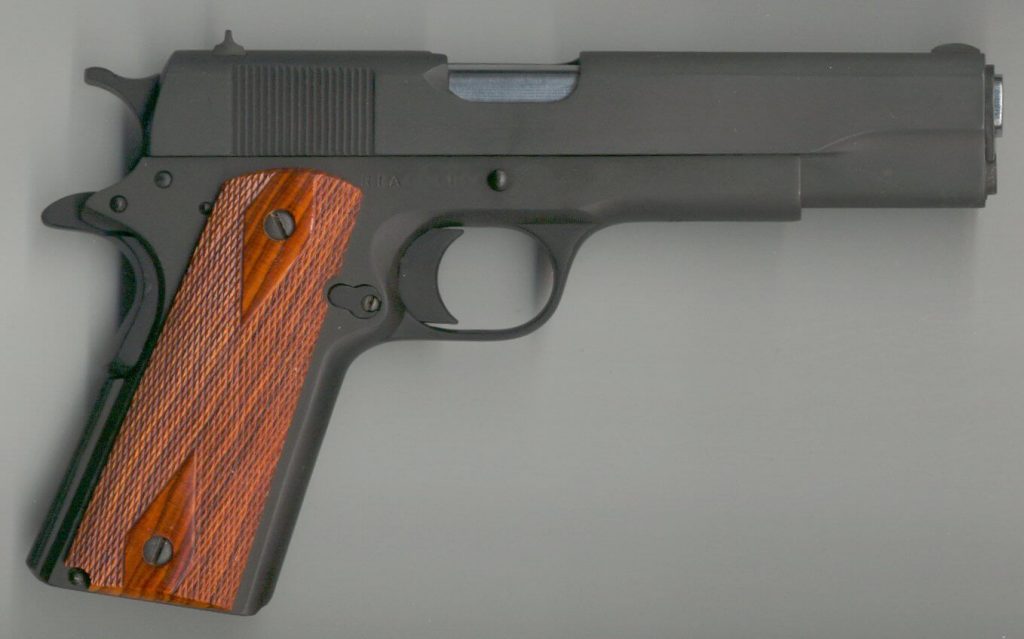
A Great Reputation
A well-built gun backed by some of the best customer service in the industry, RIA 1911s have earned a great reputation among shooters.
I have owned two RIA 1911s – a compact 1911 three-inch carry gun and a full-size Citadel model with a five-inch barrel.
Both guns were Parkerized so they were fairly impervious to minor wear.
The original 1911 utilized a short-recoil tilting-barrel Browning action that fairly well needed a five-inch barrel in order to work well. The same type of action is used today in 1911s, with some minor changes that allows it to function in compact models as well.
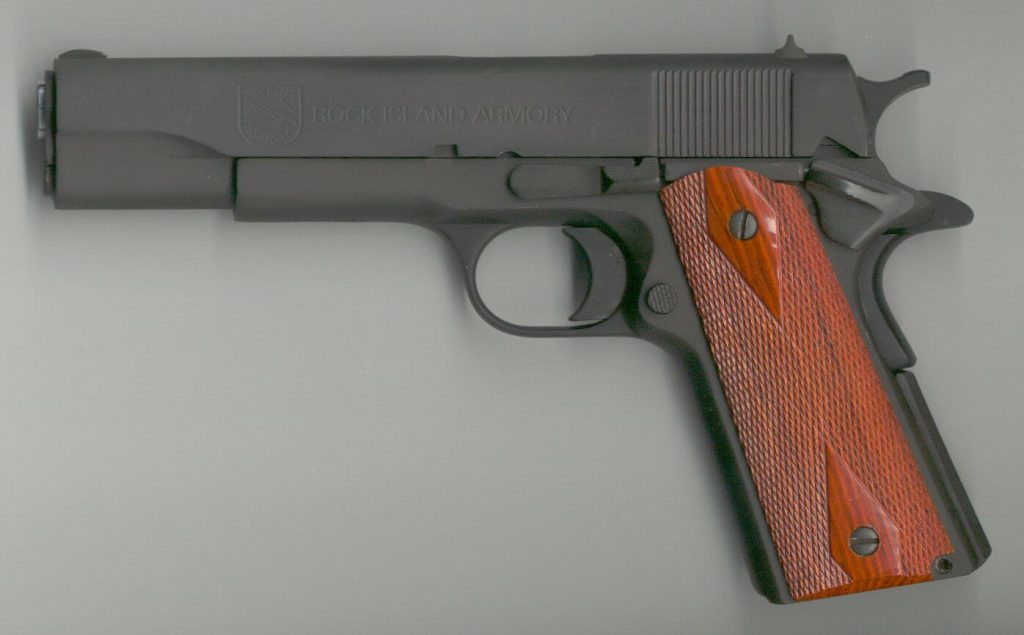
The Compact RIA 1911
Why do I mention compact 1911s when we are discussing full-size ones? Having owned a few other full-size 1911s over the years and having shot some “shortiesâ€, I do know that crafting a three-point-something-inch-barrelled gun that functions properly can be tricky.
I mention compacts simply to show how well RIA designs and builds their 1911s, even the hard-to-feed compact models.
If they can get those right, the full-size models are certain to function well.
With RIA, your choices in 1911s are many and varied, whether you’re looking for a compact (Officer), medium (Commander), or a full-size (Government) model.
RIA is one of the largest producers of 1911s in the world… which says a lot about their designs and production.
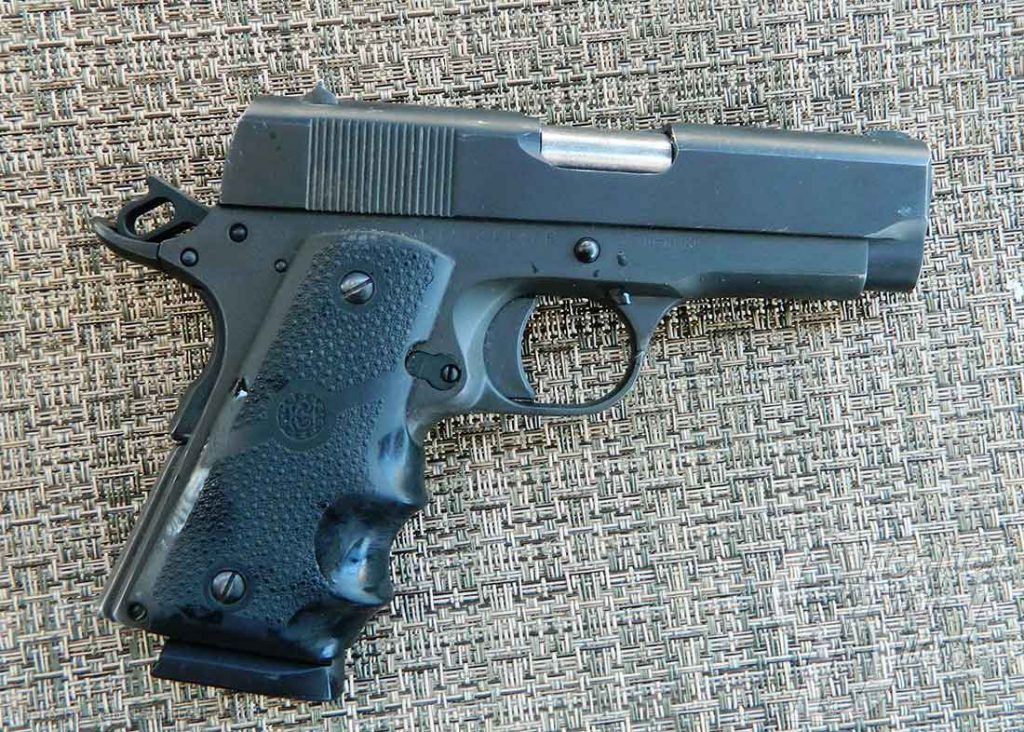
Choices, Choices…
The standard full-size 1911 produced by Rock Island Armory is a feature-packed gun, but you might have a little trouble deciding upon which one to buy.
After perusing RIA website’s various 1911 pages I saw no fewer than 48 models to choose from, offering all sorts of features at varied price points, barrel lengths, options, etc.
I have chosen one model, the standard full-size 1911 pistol (model number 51431), to feature.
A couple of items of note — in terms of shootability, the RIA Standard’s trigger breaks right around 4.5-5 pounds which helps make for an accurate gun.
Controls (safeties, slide stop, magazine release) all work very positively.
The Novak-style sights are a joy to use. Speaking of sights – the front post on a RIA 1911 is not too wide, which allows more light on both sides as you line it up with the rear sight. This is how the best target guns are set up. The Rock Standard is a well-made, accurate gun.
Customer Service
A final thought about RIA… you must experience their customer service to appreciate it.
The compact model I purchased was advertised as having an ambidextrous safety. It didn’t.
I was a bit disappointed upon opening the box. But, one call to RIA’s representative Ivan in Pahrump, Nevada solved the problem.
He not only sent me the proper safety to install, he also sent an extra recoil spring and various pieces of promotional clothing, etc.
I received this about 3 days after my call. Needless to say, I was impressed! Other gun companies could learn from RIA’s example.
You could sure do worse, for your dollar, than to end up with a Rock Island Armory 1911. Look for a street price of under $500 for this pistol.
2. Ruger SR1911 Standard Model
It’s a Ruger. For some people, that’s all they need to know. The Ruger SR1911 is a great 1911 pistol, period.
Ruger has been building semiauto pistols since Bill Ruger looked at design aspects of the Japanese Nambu and the German Luger pistols when he designed and then started producing his new pistol, the Mk. I Standard .22LR autoloader in 1949.
Ruger guns tend to be overbuilt, which endears them to volume shooters and those handloaders who can’t seem to know where to draw the line on powder charges.
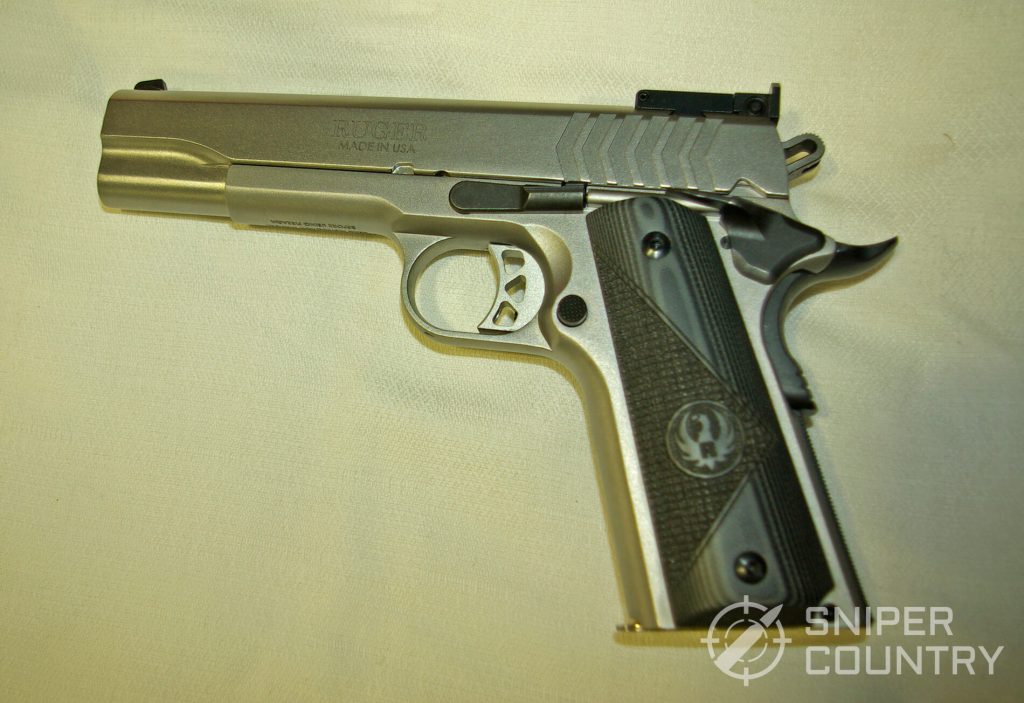
I have owned several Ruger autoloaders and have always been impressed with their construction, accuracy and customer service.
I owned both models of the Ruger .45 ACP American, the compact and the full-size. Though they were not 1911s, parallels can be drawn in terms of quality of build, toughness, ergonomics, etc.
The Ruger 1911s I’ve handled felt like they were not built on a Friday by workers ready for the weekend… they were solid mid-week guns.
No “shaky-breaky†sounds when rattled; not one dimension out of tolerance.
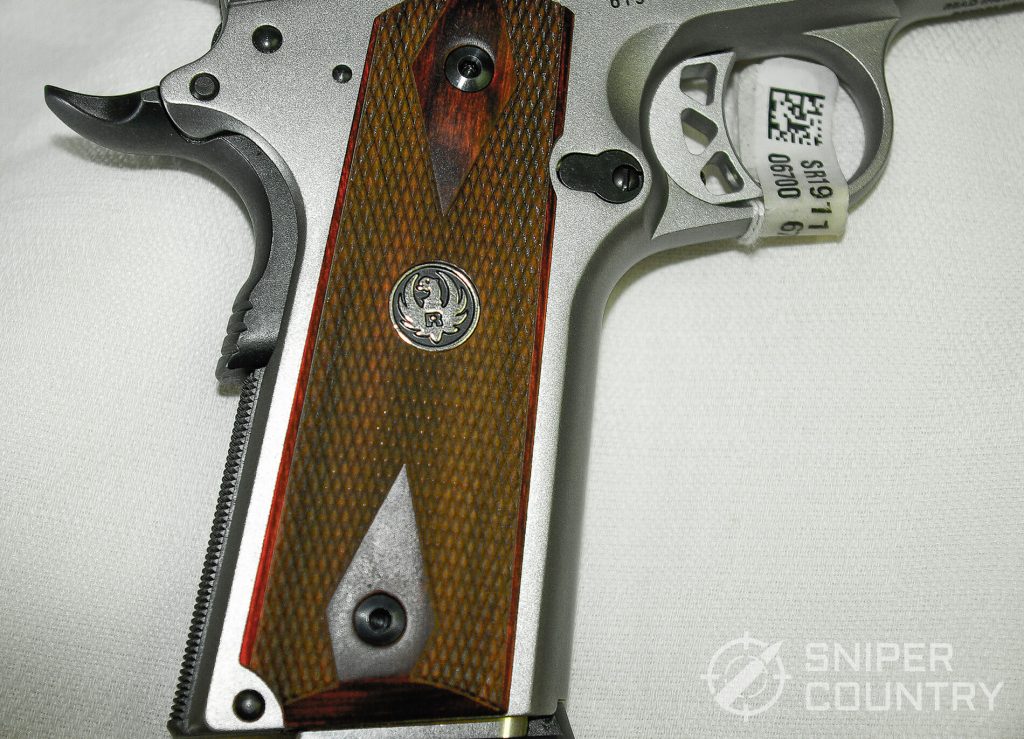
A Special 1911 Memory
The SR1911 evokes a memory of a 1911 that belonged to my friend Mitch’s dad, Ray.
Ray was a collector and could have pretty much any gun he wanted.
His most-often-shot 1911 was a Gold Cup that he had tinkered with a bit and was the finest example of John Browning’s .45 auto masterpiece that I had experienced up to that time in my life.
My memories include Ray letting me shoot that pistol at the range and how I considered that particular gun an example of metallic perfection. That’s what the SR1911 reminds me of. Craftsmanship from a bygone era.
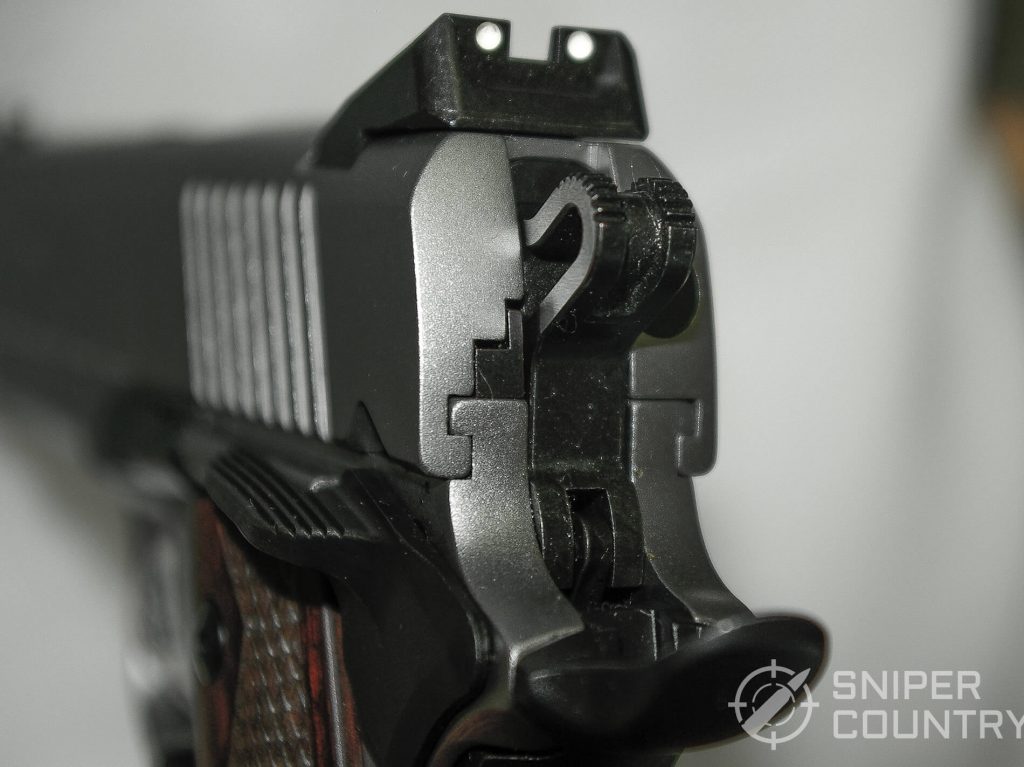
A Mighty Handsome 1911 Pistol
Bright stainless steel with beautiful figured-hardwood grip panels, highly-visible sights and solid controls exactly where they should be… this 1911 is a keeper!
It is a handsome gun, for sure. Plus, they make a lot of them.
At my last viewing of Ruger’s 1911 web pages, including distributor’s special editions, I counted sixteen different models of 1911s in .45 ACP, 9mm and 10mm.
That’s a passel of pistols! As with several of the 1911s we’re talking about, the SR1911 is based on the Series 70 design, not the Series 80.
This can help the trigger pull, as parts were added to the Series 80 guns in an effort to, among other things, make them safer if dropped.
Along with other changes a firing pin safety was added which, according to some shooters, adversely affects the trigger pull.
Some people think that the Series 70 pistols have a better, cleaner trigger than the Series 80 guns but I think it depends more on the individual gun.
At any rate, Ruger’s 1911s are Series 70 guns. If you want a gun that your kids can pass down to THEIR kids, the SR1911 fills the bill.
3. Taurus PT 1911
Taurus is a company on the move. Headquartered in Brazil, the U.S. subsidiary was based in Miami but recently moved to Bainbridge, Georgia where they’ve built a 200,000 square foot facility.
The company has come under new leadership which wishes to put negative experiences people have (or have had) with Taurus in the past.
They want to regain the shooting community’s confidence. And to their credit, they have made major progress with their G2, G2C, G3, and G3C pistols.
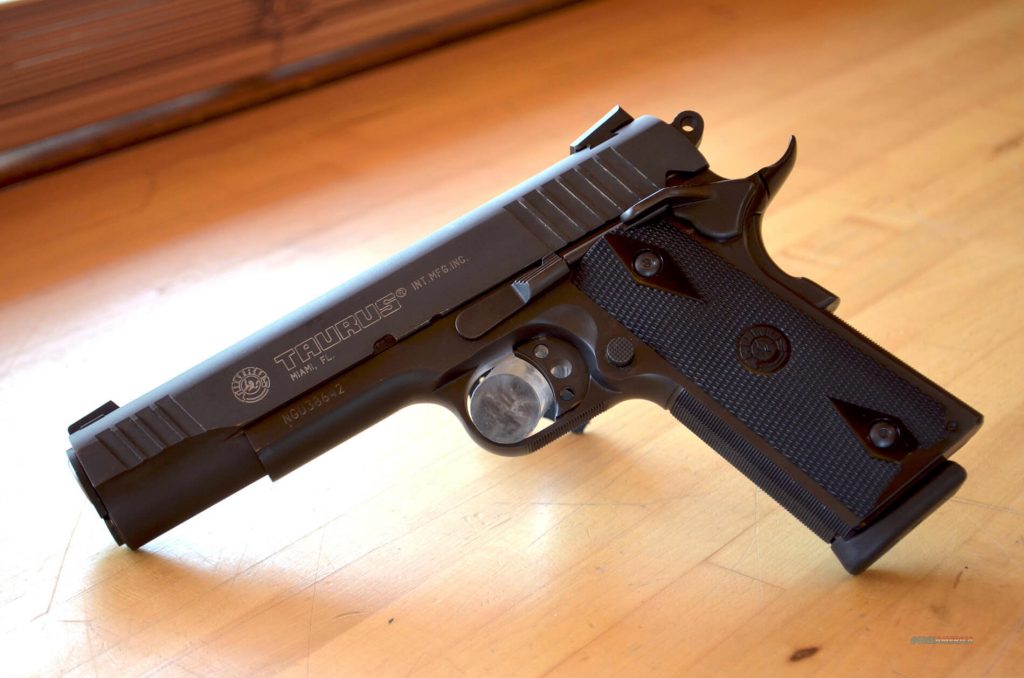
Taurus semiautos have one of basically two reputations… either you like them or you don’t, not much middle ground.
I fall into the “like them†camp. I’ve owned this gun and was much impressed by it. The Taurus PT 1911 includes, at a street price of between $450-$500, features that cost extra on some other 1911s:
 ambidextrous safety;
ambidextrous safety; full-length guide rod;
full-length guide rod; skeletonized trigger with regulated overtravel;
skeletonized trigger with regulated overtravel; genuine Novak© sights;
genuine Novak© sights; forged slide and frame;
forged slide and frame; lightened hammer;
lightened hammer; flared and lowered ejection port
flared and lowered ejection port
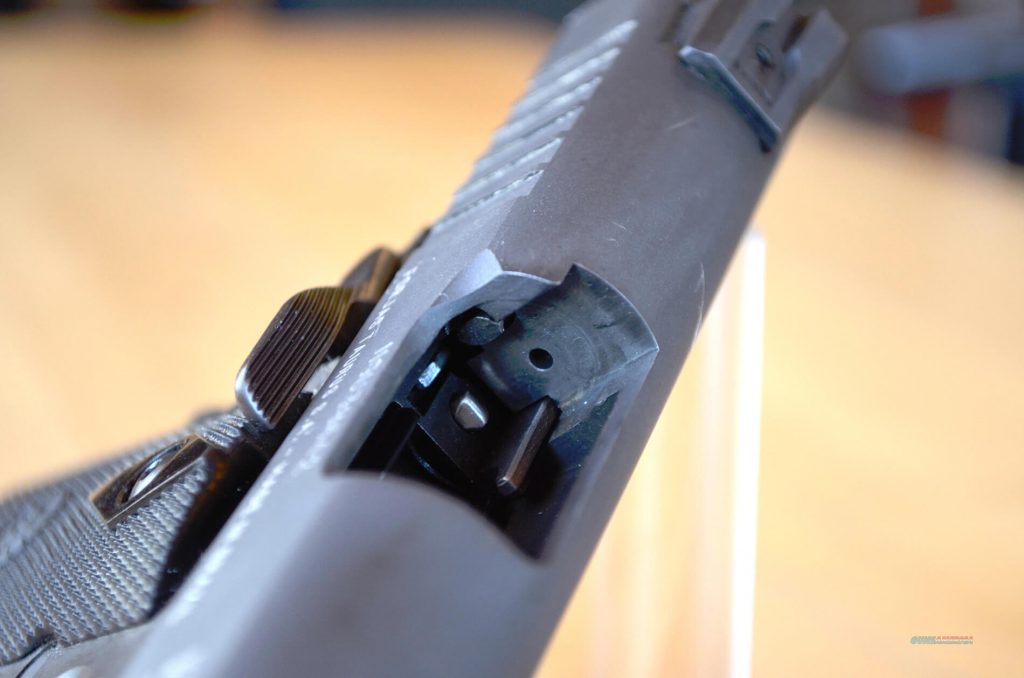
Mine was accurate and digested my handloads without complaint. The ambidextrous safety worked as advertised, and the full-length guide rod was a feature that some other guns don’t have.
My PT 1911 was just one of several Taurus semiautos I have owned or currently own. It was solidly built, had good sights and included a trigger that allowed you to be accurate at fifty yards (with the right ammo).
I don’t think you can ask for much more than that from a $450 gun.
4. Sig Sauer TACOPS 1911
Sig Sauer makes just about every kind of gun you can think of and some that you haven’t thought of yet.
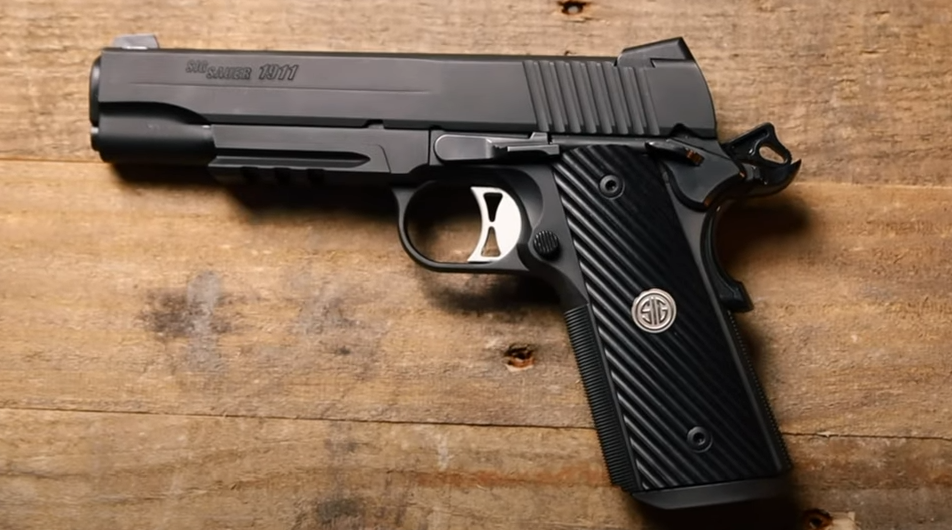
This includes a long list of awesome 1911 pistols! All of these are modern shooters, most of them designed for war or at least defensive use — but Sig has a few competition models also.
The TACOPS is a 1911 pistol you can fight with. A Nitron finish makes it ultra-durable, Siglite sights are amazing night sights that glow super bright, and a 1913 rail on the bottom is perfect for a weapon light.
Of all the Sig 1911s, the Sig TACOPS is one of my favorites.
Something that really set it apart from other 1911s for me is that the features are designed to give you an advantage in a gun fight, but the gun still feels like it was tuned for competition or for long days of fun at the range.
No matter what role you use it for, this 1911 simply delivers and does so outstandingly well.
One hidden feature is that the TACOPS ships with an adjustable trigger. If you’re not into tweaking and tuning your guns, don’t worry about it. But if you are — you can quickly adjust the pre- and over-travel of the trigger to give it a perfect glass-rod feel.
And for around $1,000, this is a heck of a price.
5. Springfield Mil-Spec 1911 .45 ACP
Need a piece of history you can hold in your hand, but want a gun that is a bit better made and nicer to shoot?
Here it is — the Springfield Mil-Spec! While it is largely based on the 1911A1 design, Springfield throws in some modern accoutrements that really help make it a much better shooter.
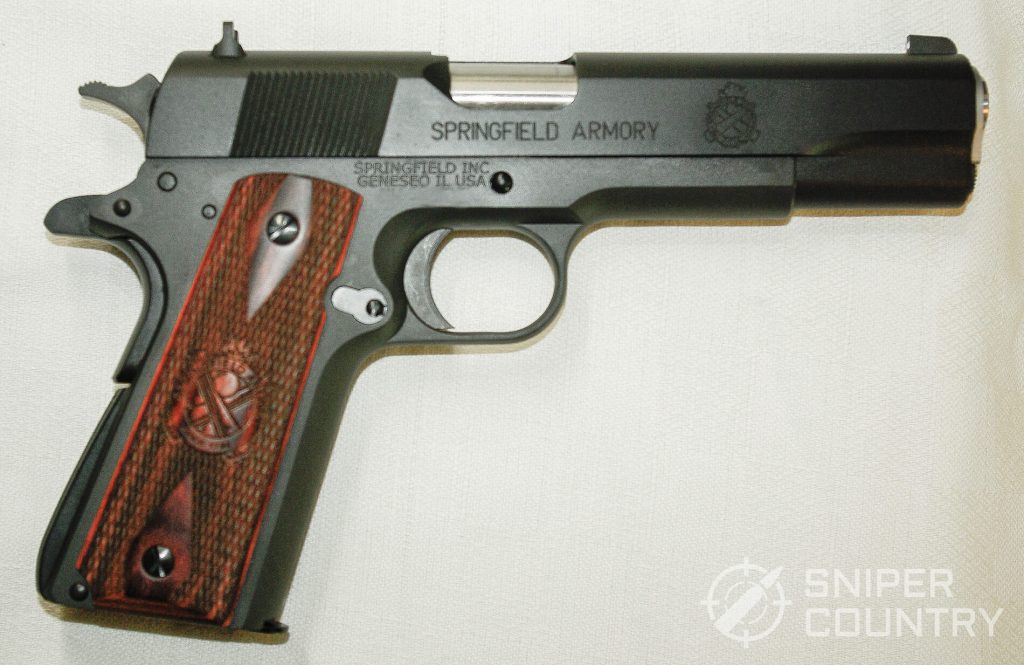
Springfield makes some great guns, that’s just fact. Springfield Armory makes at least 14 different models of the 1911 — there is truly something for everyone and every price range.
Whether you are a new shooter just wanting to get into the 1911 game or are a seasoned participant in the shooting sports, this gun should work for you. It is built, pretty much, like as an M1911A1 but with some modern twists. These would include:
 the very nicely-engraved grip panels;
the very nicely-engraved grip panels; higher three-dot combat sights;
higher three-dot combat sights; the lowered and flared ejection port
the lowered and flared ejection port
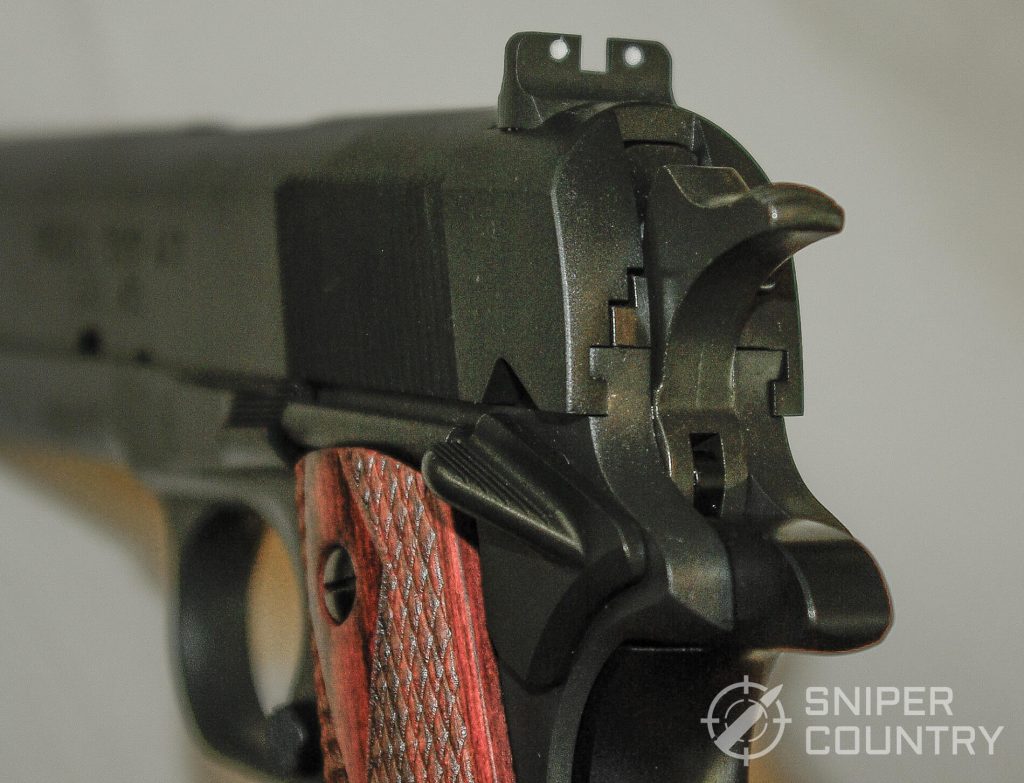
Other differences are on the inside. To be sure, this is a modern Series 70 autoloader. It is built for those who want a military-spec gun, a piece of history that they can shoot.
As with the original, there is no ambidextrous safety but that shouldn’t be a deal-breaker. This is a gun that you could take to the range or keep on your nightstand.
It would ride nicely in your truck’s glove compartment as well.
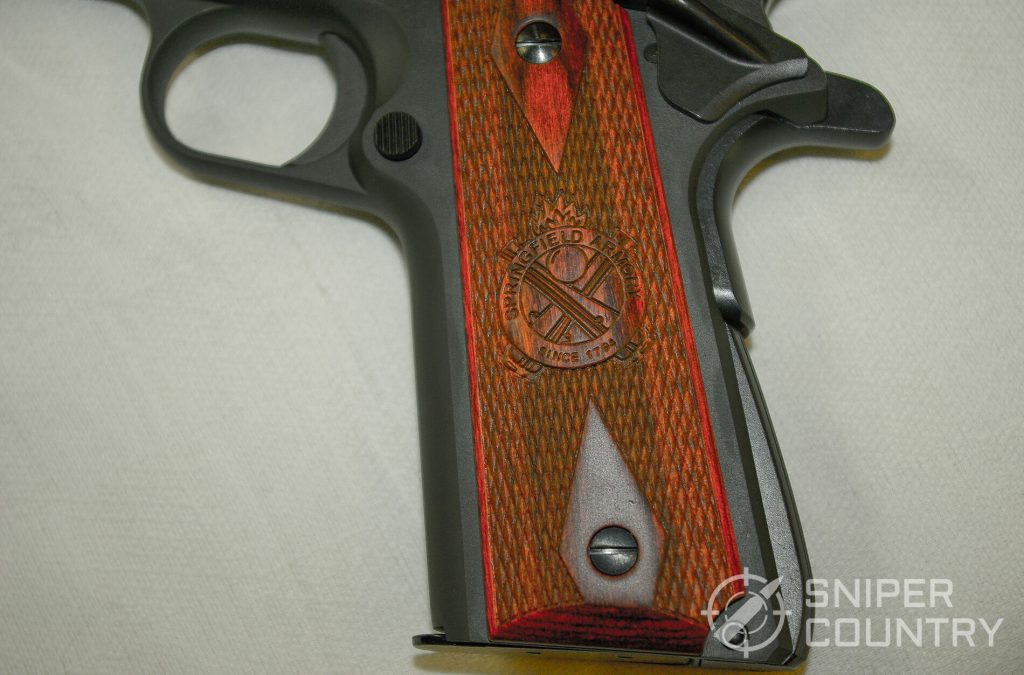
In The Hand
Springfield 1911s have a feeling all their own when you place one in your hand. These are rock-solid guns.
You know you are holding a piece of quality workmanship.
The gun ships, like the original, with 7-round magazines, but if you like, the Wilson Combat 8-round 47D magazines will work if you want to raise the capacity and possibly increase reliability.
The grips feel great and are fairly “sticky†for wood panels. Of course, they are replaceable so if you are not a traditional wood grip fan, you can change them.
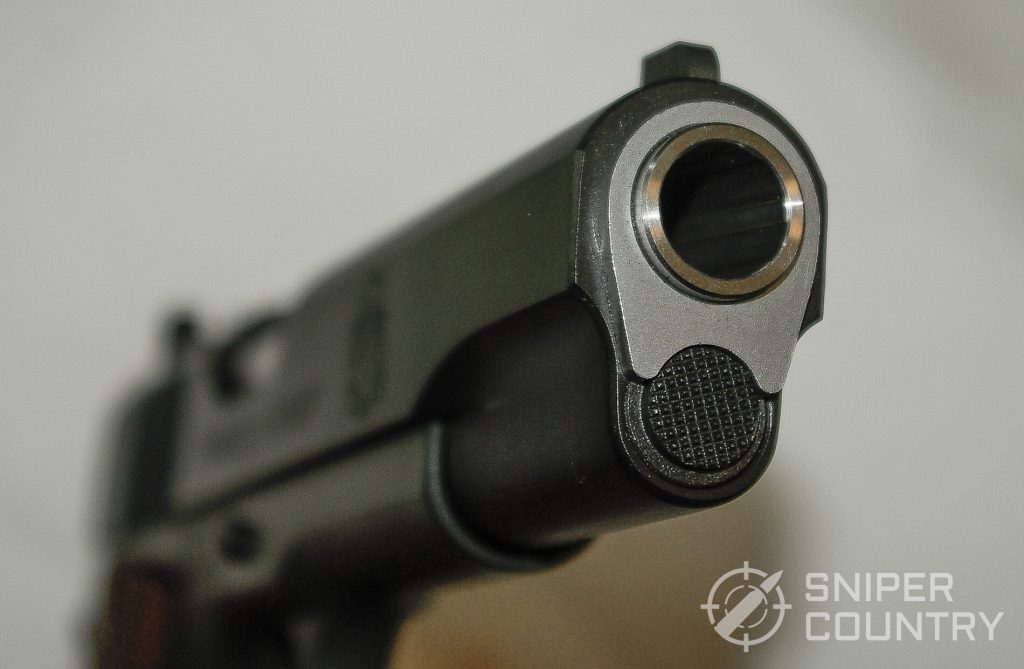
The Mil-Spec 1911 is a very good buy; it becomes even better when you figure in a real-world price of around $480-$500.
In Summary
We’ve looked at a few 1911s that I consider best buys for the money.
We have not examined the custom or high-end production models, as this article was to address a few lesser-expensive guns.
If you are on a budget but want to own the granddaddy of all American self-loading .45s, then one of the above guns should be on your radar. I know from personal experience that you can buy a budget-priced 1911 and have one fine, reliable gun…I’ve owned several lesser-expensive 1911s that worked well.
If Ol’ Slabsides is calling your name, the above guns are a great way to start your search!

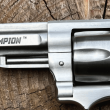
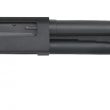
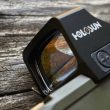
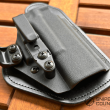
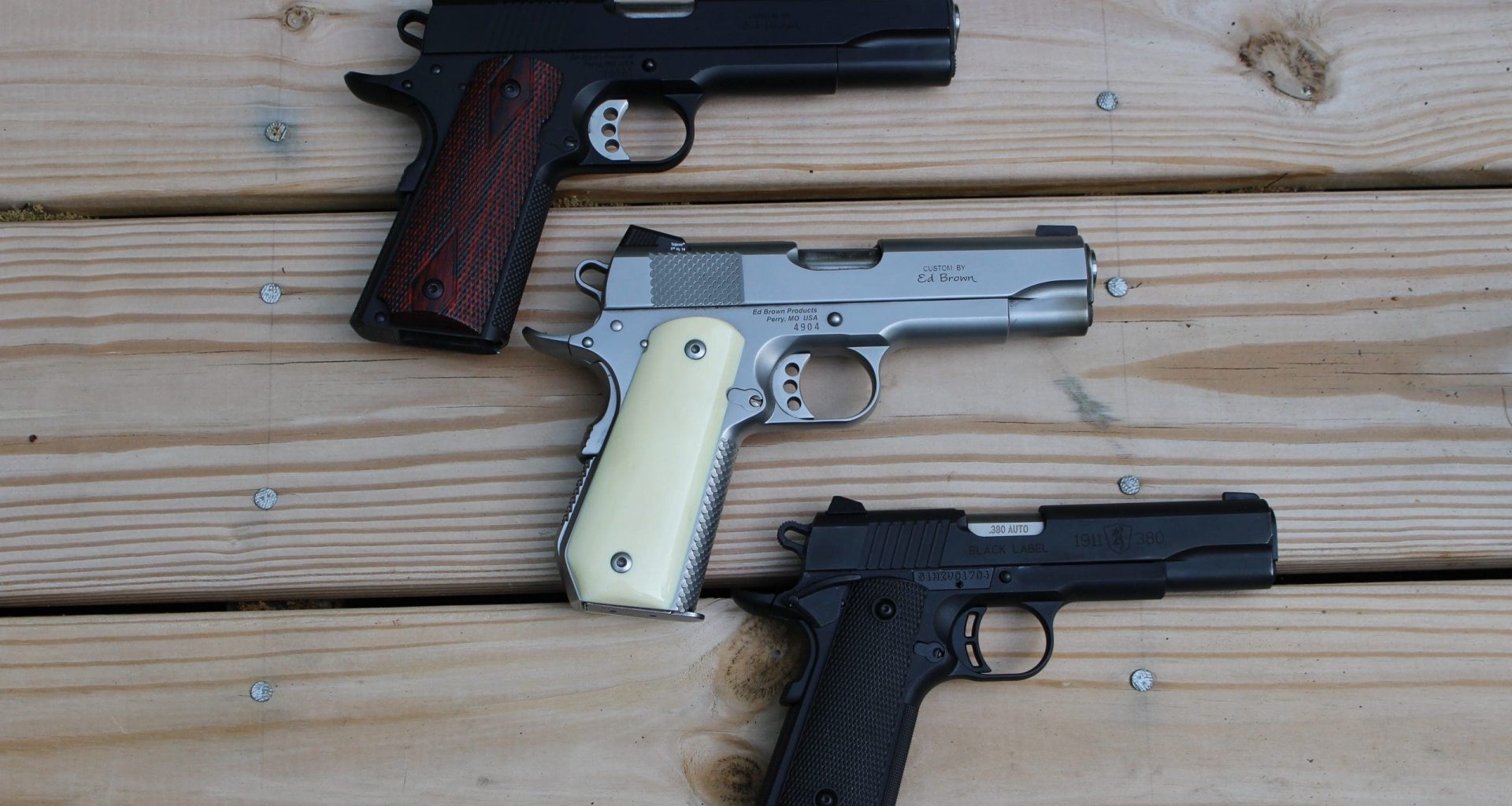
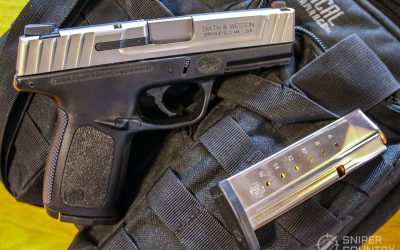
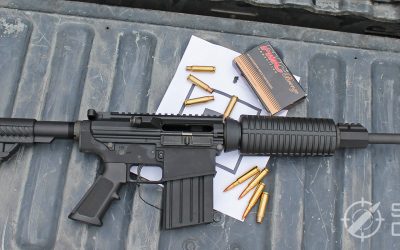
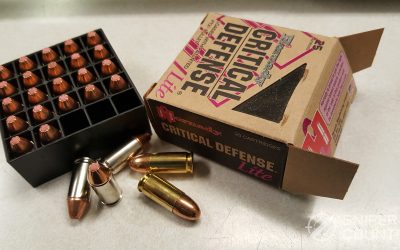
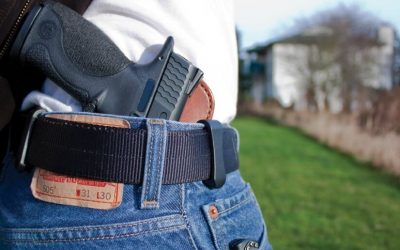
![9mm Glock Models [Ultimate Guide]](http://161.35.252.213/wp-content/uploads/2018/10/Glock-17-vs-Glock-19-vs-Glock-26-vs-Glock-41-vs-Glock-43-WM-400x250.jpg)
![Handgun Caliber Chart [2025 Ultimate Guide]](http://161.35.252.213/wp-content/uploads/2018/10/Handgun-Caliber-Comparison-400x250.jpg)
![Rifle Calibers [Ultimate Guide]](http://161.35.252.213/wp-content/uploads/2018/12/Header-1900-400x250.jpg)
